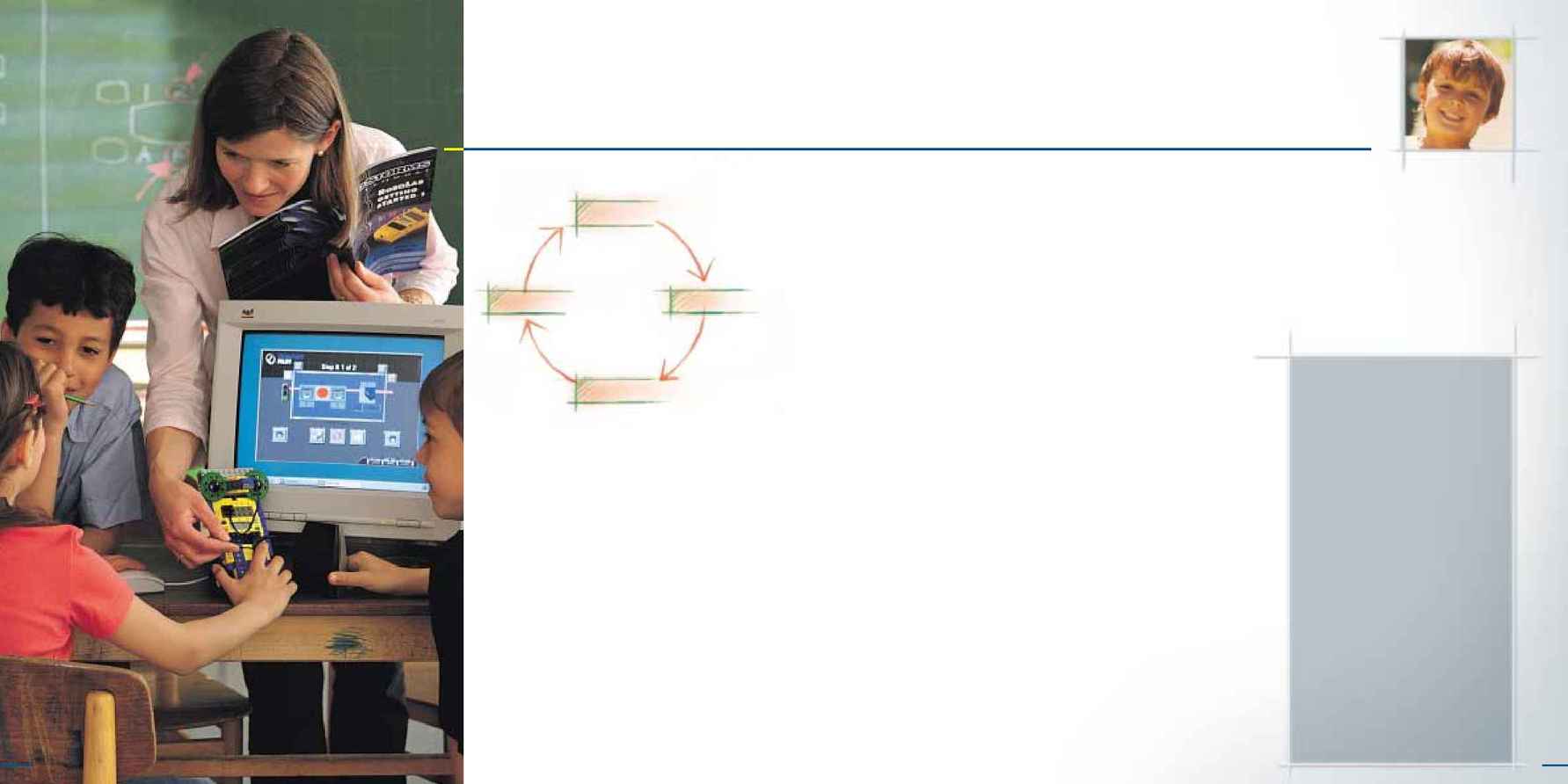
13
12
Our educational solutions are designed to support a four-step learning
process consisting of the following phases: Connect, Construct,
Contemplate, and Continue.
One of the key aspects to learning by making is the fact that children
learn best when they can either relate new experiences to their existing
"knowledge bank" or are exposed to an idea so compelling that it
inspires them to learn more about it. This is what we call the Connect
phase.
The Construct phase is all about constructing things in the real world
and piecing knowledge together in the mind. The children plan, program
software and build solutions to solve given assignments.
An important phase in an effective learning process is the Contemplate
phase, which involves students taking time to think about what they have
seen or constructed, and deepening their understanding of what they've
experienced. They discuss the project, reflect and adapt their ideas, and
the teacher encourages this process by asking questions.
The Continue phase builds on the natural urge to want to know more.
Seeking to learn more will lead students to a new Connect phase, thus
allowing them to enter a positive learning spiral, where they overcome
increasingly difficult challenges.
This structure is the backbone of all teacher and student material from
LEGO Educational Division
.
When planning activities based on these materials, the teacher can be
sure that the children in their care will be guided through motivating
projects that are rich in learning and keep within curricular bounds.
An effective Learning Process
Connect
Construct
Contemplate
Continue
Günter Häussler,
Wertingen High School, Germany
about the benefits of using LEGO
®
MINDSTORMSTM for Schools and
especially the importance of allow-
ing students the possibility to con-
template :
The pupils become acquainted with
technology, learn what they can
produce with computer programs,
and subsequently, what conse-
quences this will then have on how
the robot functions.
It is particularly beneficial for
weaker pupils to create a program
on the computer and discover for
themselves why something doesn't
work or perhaps doesn't work quite
as well as it should. This optimisa-
tion phase is especially rich in
learning opportunities.
